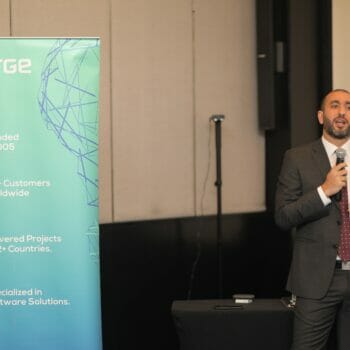
Digital Transformation and The Challenges of a Changing Culture
- Posted by Adham Jan
- On December 1, 2019
There is no doubt that digital transformation is essential for businesses wanting to stay competitive into the future. In fact, 67% of business leaders say that they need to be more digitized by 2020. The problem is that even the companies pouring a great deal of time and money into their digital transformations are finding it difficult to complete them successfully and the ROI is abysmal in some cases. According to CNBC, 70% of company investment into digital transformation failed last year.
There are a few barriers to successful digital transformation but the most often cited issue has to do with people. Changing the culture in your organization becomes the key to making meaningful changes that are sustainable. A lot of business leaders have been looking at this the wrong way. They’re building priorities without communicating with their staff. They’re making changes that don’t reflect the current corporate culture. And when it fails, they blame employees for not embracing changes that they didn’t fully invest in or understand.
If you want to succeed, you need to prioritize the people in your business and the customers you serve.
What Is True Digital Transformation?
The more things change, the more they stay the same. That phrase sounds sorely out of place in a conversation about digital transformation. After all, we know that the traditional ways we did business don’t mesh with the way we need to change culture for the digital age.
Here’s where that phrase holds sway – your focus needs to be on the people. The customer experience is an essential component in the changing face of business. But it always was. It’s a basic tenet of business that the customer is always right. The culture change you’re looking for has more to do with getting your employees on page with the processes while communicating the main goal of service and customer satisfaction.
Digital transformation is often described as better uses of technology. People mistake it for improved software, artificial intelligence, or a more automated way to gather data. But digital transformation isn’t simply improving your infrastructure. The main goal is to meet customer expectations and desires. And that’s become a challenge for most traditional companies because newer startups have changed the market.
Customers today expect to be catered to. They expect the best price at the their fingertips with a short wait time. This is all thanks to to companies like Uber, Uber Eats, Amazon, and others who’ve been able to use digital tools to meet customer needs faster and cheaper than the traditional industry allowed.
For your organization, this means looking at your digital transformation efforts in a strategic way to stay competitive. But your work is only just beginning once you’ve built a comprehensive strategy. Getting your employees to buy into the digital culture is the real key to success.
How Does A Digital Culture Differ From Traditional?
The traditional business culture is a hierarchy. Professionals expect to begin their career in a entry level position and move up over time. They also expect a set rule for their responsibilities within the organization. Entry level employees in the traditional model don’t make decisions, they follow protocols. When there is a question as to how to serve a client, they usually take that problem to their superior.
A digital culture doesn’t work in exactly the same way. For a more streamlined, customer centric service model, employees are urged to use their own descretion in serving clients with the common goal of making sure that they’re meeting the customer’s needs and improving satisfaction. Digital businesses don’t want employees who simply push buttons or follow route. They want employees who are create and enjoy thinking and developing solutions that meet client needs.
While it might be difficult to change the culture of your organization, the benefits are clearly worth it. Millennials and the new Gen Z are more interested in working with companies where they can use their own skills and where they have autonomy. You’re also tapping into great creativity and ingenuity, right in your staff. Developing this culture successfully means improved employee satisfaction and loyalty, which results in better staff retention.
A digital transformation does not happen over night. The first step is to develop your strategy for how you’d like your staff to work and what your major benchmarks are. Then you need to make sure that the lines of communication are open throughout the process. Your staff will know more about the success of the initiative than you do, so it’s important to listen to their perspective as you move forward to make meaningful changes in culture.
Do You Need Help Structuring Your Digital Transformation?
If you’re struggling with the best way to implement a digital transformation in your business, contact Sumerge today to see how our IT consultancy services can help.




